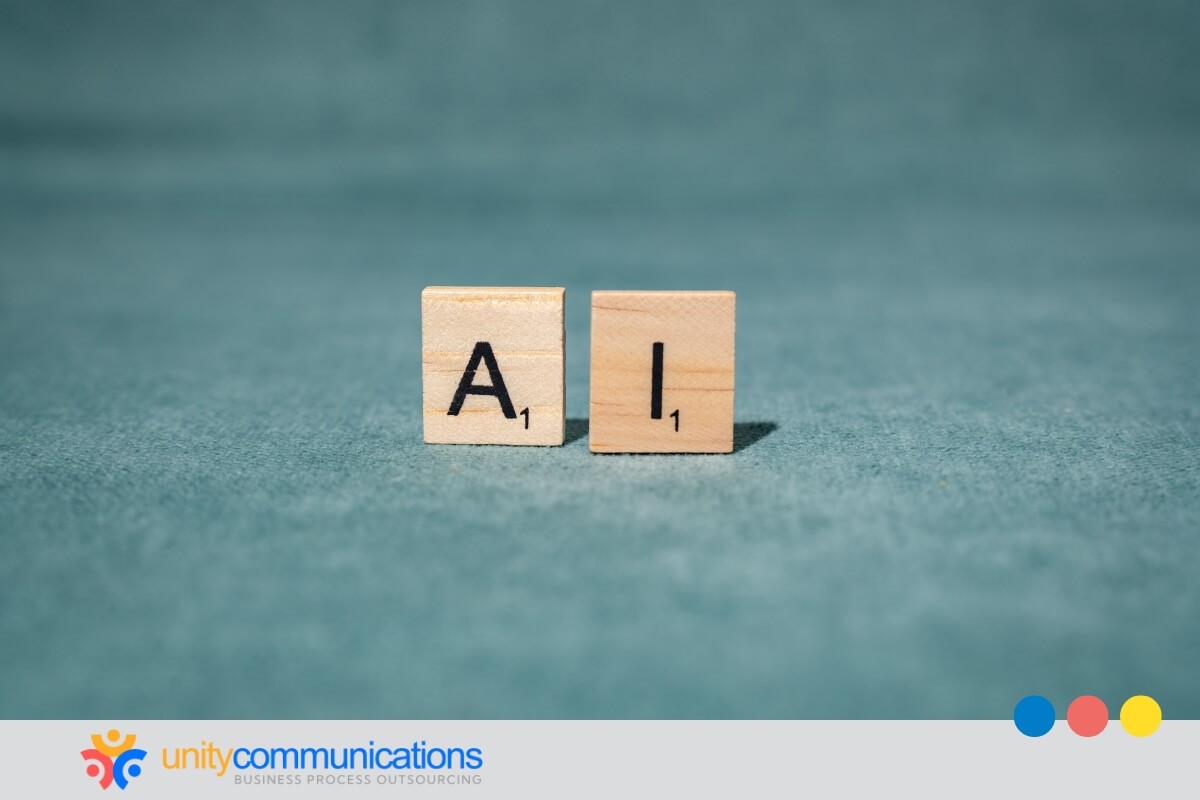Table of Contents
Artificial intelligence (AI) has become the driving force behind how modern businesses operate and compete. From automating routine processes to enabling advanced analytics and decision-making, AI is reshaping industries worldwide.
To truly understand its impact, it is essential to break down the different types of AI and how each is applied in the real world. This article examines these categories and demonstrates how organizations utilize them to achieve new levels of efficiency and innovation.
Narrow AI (ANI) vs. general AI (AGI)

AI falls into two major categories: narrow AI (also known as artificial narrow intelligence, or ANI) and general AI (artificial general intelligence, or AGI). The distinction lies in the scope and flexibility of their capabilities.
Understanding this difference is essential for recognizing where AI stands today versus where it is headed in the future. According to McKinsey’s The State of AI report, redesigning workflows significantly affects an organization’s ability to gain value from generative AI (GenAI), highlighting how the technology is already reshaping the way businesses operate.
Narrow AI
A narrow AI definition refers to systems designed to efficiently perform a single or a limited set of tasks. Examples include virtual assistants such as Siri, fraud detection algorithms, and recommendation engines on e-commerce platforms.
These types of AI systems operate within pre-defined boundaries and cannot adapt their knowledge to new, unrelated domains. While powerful in specific applications, ANI is incapable of general reasoning or human-like flexibility.
General AI
General AI is a theoretical form of AI that can understand, learn, and apply knowledge across a wide range of tasks, much like a human. Unlike ANI, it would not be restricted to a narrow field but could transfer learning from one domain to another.
AGI remains a long-term goal of researchers and is often linked to debates surrounding ethics, consciousness, and the future of work. AGI could fundamentally transform industries, societies, and human identity if achieved.
ANI powers today’s real-world applications, while AGI represents the aspirational future of AI development.
How does capability classify AI systems?
You can categorize AI by capability level, from basic task execution to theoretical forms of machine self-awareness. This framework highlights the current state of AI and the ambitious directions researchers envision for the future. In fact, the future looks bright, with Grand View Research reporting the global AI market could reach $3.5 billion by 2033.
Reactive machines
Reactive AI represents the simplest form of intelligence, focused only on current inputs without memory or learning. Famous examples include IBM’s Deep Blue, which defeated chess champion Garry Kasparov by evaluating positions in real time. These systems excel in narrow, rule-based environments but cannot adapt based on experience.
Limited memory
Limited memory AI can learn from historical data and use it to inform present decisions. Most modern AI systems, such as self-driving cars or recommendation engines, fall into this category. They store past experiences for short-term analysis but do not build a permanent understanding of the world. This makes them powerful yet still restricted compared to human intelligence.
Theory of mind
Theory-of-mind AI is a conceptual stage in which machines can understand the emotions, beliefs, and intentions of others. Such systems could interact more socially intelligently, adapting behavior based on human mental states.
While research in affective computing explores aspects of this, true theory-of-mind AI has not yet been achieved. Its development could revolutionize education, healthcare, business process outsourcing (BPO), and human-machine collaboration.
Self-aware AI
Self-aware AI is the most advanced and hypothetical stage, where machines would possess consciousness and a sense of self. This form of AI would understand external information and its own internal states.
The concept raises profound ethical and philosophical questions about rights, responsibilities, and coexistence with humans. Currently, self-aware AI exists only in theory and science fiction.
Types of AI capabilities range from simple reactive systems we use today to speculative visions of machines that could one day understand themselves and others.
What are the main AI learning paradigms?
The different types of AI could also vary in learning methods, with distinct paradigms influencing their strengths and applications. The three most common approaches are supervised, unsupervised, and semi-supervised learning.
Supervised learning
Supervised learning utilizes labeled datasets to train models, where each input is paired with its corresponding correct output. This approach allows algorithms to “learn by example,” improving accuracy as they compare predictions against known results.
It powers everyday applications such as spam detection, fraud prevention, and medical image classification. While highly effective, supervised learning requires large amounts of labeled data, which can be costly and time-consuming to create.
Unsupervised learning
Unsupervised learning works with unlabeled data, identifying hidden structures or groupings without explicit guidance. Algorithms such as clustering and dimensionality reduction help uncover patterns in massive datasets.
Applications include customer segmentation, anomaly detection, and recommendation systems. The main challenge is interpreting results, since no labeled output can confirm correctness.
Semi-supervised learning
Semi-supervised learning combines the two approaches by utilizing a small amount of labeled data alongside a large pool of unlabeled data. This method reduces the burden of labeling while still achieving reliable accuracy.
It is beneficial in fields such as medical research, where labeled datasets are limited. For example, semi-supervised models can classify rare diseases with minimal expert-annotated data.
Supervised, unsupervised, and semi-supervised types of AI learning offer distinct trade-offs between accuracy, cost, and scalability, making them valuable tools for modern AI applications.
How does reinforcement learning differ from deep reinforcement learning?
Reinforcement learning (RL) is a powerful paradigm where agents learn by interacting with an environment and receiving feedback. Deep reinforcement learning (deep RL) extends this concept by integrating neural networks, enabling greater complexity and scalability.
Reinforcement learning
RL is based on trial and error. An agent takes actions in an environment and learns from the rewards or penalties it receives. Over time, it develops strategies that maximize long-term rewards, much like humans learn through experience.
A classic AI application overview includes game-playing systems and robotic control. However, traditional RL struggles when environments are complex or involve high-dimensional data.
Deep reinforcement learning
Deep RL combines reinforcement learning principles with deep neural networks to handle more complicated problems. Neural networks help approximate value functions and policies in environments where traditional RL would fail.
Landmark successes include DeepMind’s AlphaGo, which defeated world champion Go players using deep RL techniques. This approach allows for autonomous driving, logistics optimization, and advanced robotics.
RL teaches agents through rewards and actions, while deep RL supercharges this method with neural networks to tackle highly complex, real-world challenges.
What is self-supervised learning, and how do foundation models fit in?

Self-supervised learning is a training approach where AI systems learn patterns from unlabeled data by predicting missing parts of the input. Unlike supervised methods that rely heavily on human-annotated datasets, self-supervised approaches unlock the massive potential of raw text, images, and other data types.
However, with more than three-quarters of consumers expressing concern about the accuracy of information produced by AI, the reliability of these models remains a critical consideration. Nevertheless, this method has become the foundation of many modern AI breakthroughs. Foundation models (e.g., large, pre-trained systems such as GPT, BERT, or CLIP) are prime examples of how self-supervised learning drives scalable AI innovation.
- Massive pretraining on unlabeled data. Foundation models are trained on billions of words, images, or signals without requiring human annotation or labeling.
- Transfer learning across tasks. Once trained, these models can be fine-tuned for specific applications such as chatbots, translation, or medical image analysis.
- Multimodal capabilities. Self-supervised learning enables foundation models to integrate text, images, speech, and other modalities within a unified framework.
- Efficiency and scalability. By reducing the reliance on labeled datasets, foundation models make large-scale AI development more practical and cost-effective.
Self-supervised learning fuels foundation models, which power today’s most versatile and robust AI systems.
How do generative and discriminative model families compare?
AI models often fall into two major families: generative and discriminative. Both aim to learn from data, but they differ in how they represent patterns and solve tasks. Understanding the distinction helps clarify why specific models excel at creating new content while others shine at classification and prediction.
Generative models
About 67% believe GenAI will enhance the value of their other tech investments, including AI and machine learning (ML) models. Generative models achieve this by learning the underlying distribution of data to create new, realistic examples.
Examples include GPT for text, GANs for images, and diffusion models for synthetic media. Generative systems are robust for content creation, data augmentation, and simulation tasks. By modeling data distributions, they enable creativity and adaptability.
Discriminative models
Discriminative models can directly separate categories or predict outcomes based on inputs. Examples include logistic regression, support vector machines (SVMs), and deep classifiers such as ResNet. They excel at spam detection, sentiment analysis, and fraud detection. Their strength lies in precision and efficiency for well-defined tasks.
Generative and discriminative types of AI complement each other, powering various applications from creativity to decision-making.
What distinguishes symbolic AI, neural AI, and neuro-symbolic hybrids?
AI has evolved through different schools of thought, each with unique methods for representing and processing intelligence. Symbolic AI emphasizes logic and rules, connectionist AI relies on neural networks inspired by the brain, and hybrids aim to merge both. Understanding these approaches reveals how today’s systems strike a balance between reasoning and pattern recognition.
Symbolic AI
Symbolic AI, or “good old-fashioned AI” (GOFAI), represents knowledge using symbols, rules, and logic. It powered early expert systems and programs such as the Logic Theorist. Its strength lies in explicit reasoning, explainability, and structured problem-solving. However, symbolic AI struggles with ambiguity, scalability, and real-world uncertainty.
Connectionist (neural) AI
Connectionist AI models intelligence through networks of artificial neurons that learn from data. This family encompasses DL systems, including convolutional neural networks (CNNs) for vision and transformers for language. It thrives in pattern recognition, perception, and large-scale prediction tasks. The downsides include a lack of transparency and the need for extensive data and computing resources.
Neuro-symbolic hybrids
Neuro-symbolic AI combines the structured reasoning of symbolic systems with the learning power of neural networks. These hybrids aim to create models that recognize patterns and reason logically. Applications include explainable AI, robotics, and systems integrating commonsense reasoning with perception.
By comparing symbolic, connectionist, and hybrid types of AI, we see how the field continues to evolve toward robust and interpretable systems.
How do different AI modalities work?
AI systems often specialize in different modalities, or ways of interpreting and generating information. According to SurveyMonkey, 69% of marketing professionals are enthusiastic about AI technology and its potential impact on their work, reflecting how these advancements are already shaping the marketing industry.
Natural language processing (NLP), computer vision, and speech AI focus on a specific form of human communication, while multimodal AI integrates multiple streams. Understanding these types shows how AI interacts in more natural and versatile ways.
Natural language processing (NLP)
The NLP market is projected to reach $453.3 billion by 2032, underscoring its growing importance in technology and business. NLP enables machines to understand, interpret, and generate human language, powering applications including chatbots, translation tools, and sentiment analysis systems.
Techniques such as transformers and large-language models (LLMs) have significantly improved fluency and contextual understanding, enabling businesses to leverage NLP for enhanced customer service, streamlined document automation, and informed market insights.
Computer vision
Computer vision focuses on enabling machines to process and interpret visual information from the world around them. Applications include facial recognition, autonomous vehicles, and medical imaging. DL models, particularly CNNs, excel at extracting patterns from images and video. This modality is crucial for ensuring safety, quality control, and making informed real-time decisions.
Speech AI
Speech AI processes spoken language for voice recognition, transcription, and conversational AI agents. It underpins technologies such as virtual assistants and automated call centers. Advances in acoustic modeling and neural networks boosted accuracy in noisy environments. This modality bridges the gap between natural human communication and digital systems.
Multimodal AI
Multimodal AI integrates inputs from multiple sources, including text, images, audio, and sensor data. It enables richer, more context-aware interactions, such as real-time video and speech analysis. Examples include GenAI systems that create images from text prompts or analyze patient data across multiple modalities.
These types of AI modalities expand AI’s reach, making it a versatile partner across industries and everyday life.
What’s the difference between edge, cloud, and on-premises AI?

AI systems are also shaped by where they are deployed. Deployment models such as edge AI, cloud AI, and on-premises AI each offer unique benefits and trade-offs regarding performance, scalability, cost, and security. Understanding these differences helps you determine the most effective way to implement AI for your specific needs.
Edge AI
Edge AI processes data locally on devices such as smartphones, IoT sensors, or autonomous vehicles, reducing latency, improving privacy, and enabling real-time decision-making without relying on constant internet access. It is ideal for predictive maintenance, smart cameras, or wearable health devices. However, its application might be limited by the computational power of smaller devices.
Cloud AI
Cloud AI leverages powerful remote servers to store data and run complex AI models at scale. It enables your business to leverage advanced ML capabilities without incurring significant investment in local infrastructure.
Google Cloud AI, AWS AI, and Microsoft Azure make it easy to scale and integrate AI applications, offering internet connectivity with potential concerns over data privacy.
On-premises AI
On-premises AI runs entirely within an organization’s internal infrastructure. This provides maximum control over data security, compliance, and customization, making it well-suited for industries with stringent regulatory requirements, such as healthcare and finance. It offers control but demands high upfront costs, ongoing maintenance, and specialized IT expertise.
The choice between edge, cloud, and on-premises types of AI depends on the balance between speed, scalability, cost, and security that best fits a business’s strategy.
How are AI decision-making classes defined?
AI decision-making is often grouped into distinct classes that reflect different levels of insight and action. From summarizing past events to guiding future strategies, these classes help organizations understand how AI can support business objectives. Knowing the distinctions makes it easier to choose the right approach for solving specific problems.
Descriptive AI
Descriptive AI focuses on summarizing and interpreting past data. It answers the question, “What happened?” by highlighting patterns, trends, and anomalies. Dashboards, reports, and visualization tools fall under this category. Businesses utilize descriptive AI for performance tracking, analyzing customer behavior, and quality monitoring.
Predictive AI
Predictive AI uses historical data to forecast outcomes. It answers, “What is likely to happen?” by leveraging ML models for demand forecasting, fraud detection, or churn prediction tasks. These insights help you anticipate risks and opportunities. Predictive AI is especially valuable in finance, retail, and logistics.
Prescriptive AI
Prescriptive AI goes beyond predictions to recommend actions. It answers, “What should we do?” by simulating different scenarios and suggesting optimal strategies. Applications include supply chain optimization, personalized marketing campaigns, and resource allocation. This class enables proactive, data-driven decision-making.
Causal AI
Causal AI focuses on uncovering cause-and-effect relationships rather than just correlations. It answers questions such as “Why did this happen?” and “What would happen if we change X?” by applying causal inference techniques. This enables you to design interventions with confidence, such as testing the impacts of policies or treatment effects in healthcare.
These decision-making types of AI form a spectrum from insight to action, helping you leverage the technology at every stage of the business process.
The bottom line
AI takes many forms, from narrow systems to advanced models, each with unique capabilities and applications. Exploring the various types of AI, from decision-making algorithms to deployment models, and understanding how outsourcing works can help you know how to leverage them for growth and innovation.
As AI evolves, embrace its potential to stay ahead of the curve. Start identifying which AI approach fits your strategy today. Let’s connect.




